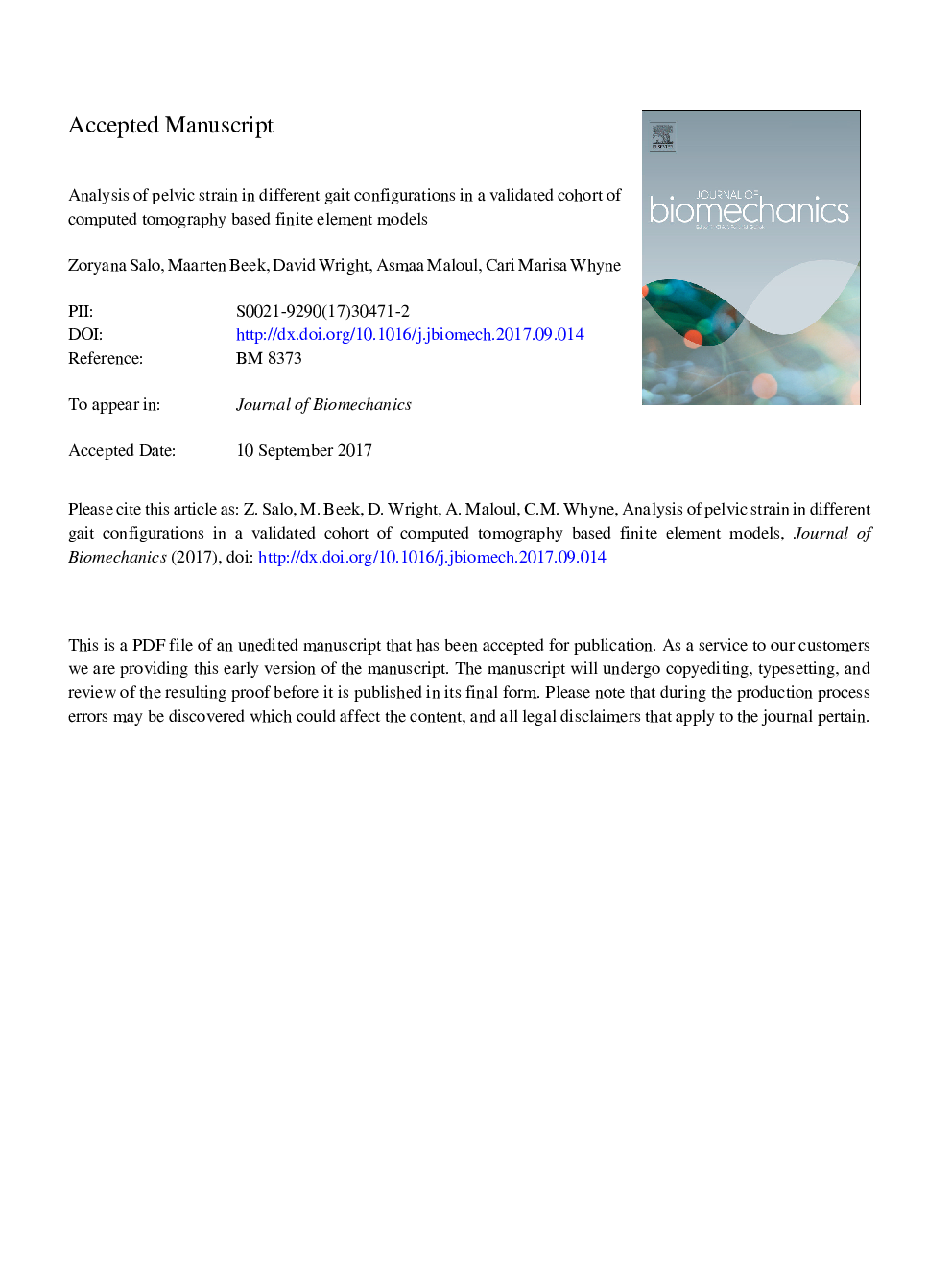| کد مقاله | کد نشریه | سال انتشار | مقاله انگلیسی | نسخه تمام متن |
|---|---|---|---|---|
| 7237046 | 1471100 | 2017 | 30 صفحه PDF | دانلود رایگان |
عنوان انگلیسی مقاله ISI
Analysis of pelvic strain in different gait configurations in a validated cohort of computed tomography based finite element models
ترجمه فارسی عنوان
تجزیه و تحلیل سویه لگن در تنظیمات مختلف قدم در یک گروه معتبر از مدل های عنصر محدود
دانلود مقاله + سفارش ترجمه
دانلود مقاله ISI انگلیسی
رایگان برای ایرانیان
کلمات کلیدی
تجزیه و تحلیل عنصر محدود، پالیز، مورفین مش، نقشه برداری مش، اعتبار سنجی کرنوم تجربی، نشانه ها،
موضوعات مرتبط
مهندسی و علوم پایه
سایر رشته های مهندسی
مهندسی پزشکی
چکیده انگلیسی
The pelvis functions to transmit upper body loads to the lower limbs and is critical in human locomotion. Semi-automated, landmark-based finite element (FE) morphing and mapping techniques eliminate the need for segmentation and have shown to accelerate the generation of multiple specimen-specific pelvic FE models to enable the study of pelvic mechanical behaviour. The purpose of this research was to produce an experimentally validated cohort of specimen-specific FE models of the human pelvis and to use this cohort to analyze pelvic strain patterns during gait. Using an initially segmented specimen-specific pelvic FE model as a source model, four more specimen-specific pelvic FE models were generated from target clinical CT scans using landmark-based morphing and mapping techniques. FE strains from the five models were compared to the experimental strains obtained from cadaveric testing via linear regression analysis, (R2 values ranging from 0.70 to 0.93). Inter-specimen variability in FE strain distributions was seen among the five specimen-specific pelvic FE models. The validated cohort of specimen-specific pelvic FE models was utilized to examine pelvic strains at different phases of the gait cycle. Each validated specimen-specific FE model was reconfigured into gait cycle phases representing heel-strike/heel-off and midstance/midswing. No significant difference was found in the double-leg stance and heel-strike/heel-off models (p = 0.40). A trend was observed between double-leg stance and midstance/midswing models (p = 0.07), and a significant difference was found between heel-strike/heel-off models and midstance/midswing models (p = 0.02). Significant differences were also found in comparing right vs. left models (heel-strike/heel-off p = 0.14, midstance/midswing p = 0.04).
ناشر
Database: Elsevier - ScienceDirect (ساینس دایرکت)
Journal: Journal of Biomechanics - Volume 64, 7 November 2017, Pages 120-130
Journal: Journal of Biomechanics - Volume 64, 7 November 2017, Pages 120-130
نویسندگان
Zoryana Salo, Maarten Beek, David Wright, Asmaa Maloul, Cari Marisa Whyne,
